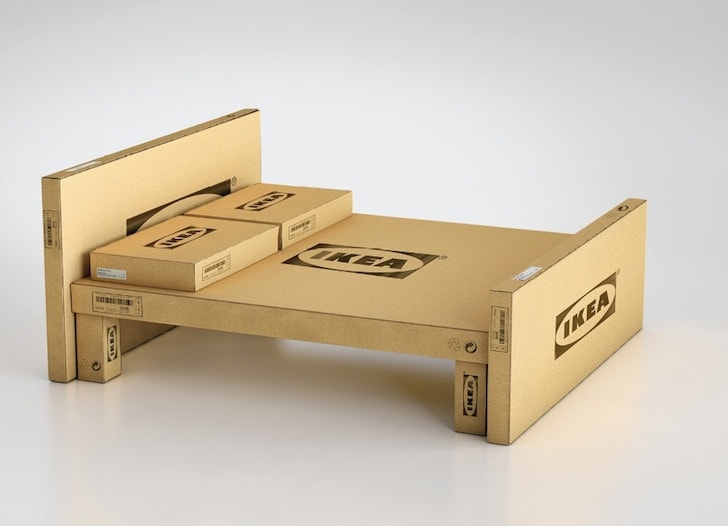How To Reduce or Restructure Your Costs
“Costs are like fingernails; you have to cut them constantly” – Carlos Alberto Sicupira
I don’t know many entrepreneurs who enjoy cutting costs, but I know a lot who enjoy the benefits they get from their diligence.
Your business is like a hurdler running down a very long track, frequently using their energy to clear a hurdle.
If revenues are the height of your jump, then costs are the height of the hurdle.
The larger the gap between the two, the safer you’ll feel and the faster you’ll run.
Whilst sometimes the best advice is to jump higher, it may well be easier to lower the hurdle.
There are four principles here, and each of them has the ability to make your business stronger.
You can identify areas that can receive a 10% trim.
You can identify areas that can receive a 100% trim.
You can swap between fixed and variable costs.
You can defer costs so that you spend money once you’re earned it.
We’ll look at some examples for each, and see how your business could benefit from some clever changes.
Identifying Opportunities for a 10% Trim
Here’s a maths question for you:
Let’s say you sell widgets for $1 each, and it costs you 90c to manufacture each of them.
If the cost goes up to 95c per widget, what happens to your profits?
They halve.
Vice versa, what happens to profits if the cost drops to 80c?
They double.
This is the power of small changes – the jump between 90c and 95c is only around a 5% increase in costs, but it cuts your margin in half.
That power can be used to your advantage – if you can reduce your costs by 10c per widget, you’ll end up with as much profit as you would have if you doubled your sales.
It pays to think laterally.
American Airlines removed one olive from each of their business class salads, and saved $40,000 per annum.
Delta went from cutting their limes into 1/10ths to 1/16ths, saving them $500,000 across the organisation each year.
UPS decided to plot their driver’s routes using software that gave only right turns – saving them 20 million miles off their deliveries and gaining an extra 350,000 packages delivered a year.
IKEA design their furniture to fit in flat packs and using interchangeable parts, massively shrinking their shipping and inventory costs.
Each of these approaches stemmed from the same root idea – what do our customers care about, and what don’t they see?
Customers enjoy good quality ingredients in business class, but don’t notice a drop from 5 olives to 4.
People like a well presented cocktail, but the size of the lime garnish didn’t really affect their enjoyment of the drink.
Customers want their packages to arrive at the time they were told, but don’t care about the exact route the courier takes.
People who are buying their first furniture have little money but are prepared to assemble furniture themselves, and appreciate IKEA passing on the cost saving through low prices.
To do this for our own business, it’s helpful to compare our expenses with our customer journey, and look for discrepancies.
Which costs have a disproportionate impact on our customer’s enjoyment?
Where there’s a high impact, we’ll keep paying the cost.
Where there’s a low impact, we’ll see if we can reduce (or eliminate) the cost.
Mind you, this doesn’t always work.
In Australia, Arnotts changed the formula for their popular Shapes crackers, allegedly opting for cheaper flavouring ingredients.
They reverted due to huge customer backlash, but also received a lot of free publicity about how much people loved the old Shapes recipe.
Identifying Opportunities for a 100% Trim
Once you’ve mapped out the links between costs and customer enjoyment, which expenses can you remove completely?
Where are you over-delivering?
The social networking app Burbn realised that its users only really engaged with their photo sharing features, so they pivoted and cut out all the other features.
Then they changed their name to Instagram.
This is the principle that Greg McKeown called “Essentialism” – the deliberate act of removing everything that isn’t vital, in order to supercharge the things that really matter.
Maybe it’s the least visited pages on your website.
Maybe it’s the least popular items on your menu.
Maybe it’s the roles required in your team.
Maybe it’s the equipment you thought you needed to own.
Nobody likes getting rid of features that have potential, least of all the founders.
But by consciously removing the distractions, you channel your customer’s attention towards your core strength.
Instead of being “Jack of all trades, master of none”, you’re declaring yourselves as unapologetic masters, renowned for your specialisation.
Social enterprise Thank You did this at the end of 2017; their business has four main arms, and they made the tough call to drop the one that was performing the slowest.
A painful cut, but one that has allowed them to refocus their energy on the arms that create serious income and serious impact.
I don’t want to downplay the severity of cutting staff.
It’s easy for sociopath consultants in skyscrapers to make recommendations based on spreadsheets, oblivious to the human impact of making people redundant.
For me, essentialism is about redeploying your resources, and should be done with as much empathy, care and flexibility as possible.
The aim is not to fire staff to make more money – instead it’s about allocating people to the parts of your business that drive growth.
Other areas that can be opportunities for 100% reductions:
Company vehicles
Large office spaces
Multiple premises/shopfronts
Admin support from a parent company
Print publications
Social media/comms teams
Custom websites/mobile apps
Junior staff who don’t bring in revenue
Low performing affiliates/stockists
Swapping Fixed and Variable Costs
Sometimes it’s not a matter of removing a cost, but rather changing the format in which money is spent.
For example, there’s sometimes benefits in doing things yourself, and other times there’s benefits in outsourcing to a specialist.
I can’t make a good coffee, let alone whip up 15 different orders like soy chai lattes or decaf almond cappuccinos.
Since I need people to be awake and caffeinated in my workshops, I’m happy to budget in $4 per beverage for each participant, which is then spent at the café next door.
Sure, it would be cheaper for me to buy a machine and do it myself, but it would become a huge headache and result in worse coffee.
Vice versa, I maintain my own website and publish my own content, saving thousands of dollars whilst teaching myself a lot about how web design affects readership.
The decision to insource (do it yourself) or outsource (hand it over to a specialist) depends entirely on your circumstances.
In fact, these decisions are often what define companies.
Nespresso decided to outsource machine manufacturing to Breville and DeLonghi, but managed all of their “Boutiques” and shopfronts themselves.
Many small businesses outsource their web services and online shop setup to Amazon, who bring traffic and clean processing in exchange for a commission.
Restaurants outsource their deliveries to Uber Eats, who in turn outsource to a series of independent drivers/riders.
Apple wanted to insource their headphone production and music streaming services, leading them to pay over $3B for Beats.
Facebook have acquired at least 67 companies at time of writing, with each giving them additional functionality in their platform (like their photos, groups and messenger app)
Disney are removing their content from other streaming services in order to build their own, a higher initial expense in exchange for keeping more revenue for themselves.
The question you should ask yourself is; what is our specialty?
Once you understand your competitive advantage, you can start identifying opportunities to rid yourself of the processes that are cheaper to outsource, and to start offering other groups the chance to use your services for a reduced price.
It’s not just the total cost either, it’s the ways in which your cash gets tied up.
For example, expensive equipment might be the best financial decision over a five-year period, but it requires huge upfront investment and gives you very little room to move.
Renting might seem costlier over the long run, but it gives you the freedom to change your business model based on market feedback, and means someone else carries the risks associated with the machinery breaking.
Adam Savage from Mythbusters gives similar advice: buy the cheapest version of every tool, and when one breaks through repeat usage, go out and buy the best replacement you can afford.
That way, you know that it’s a vital piece of equipment, whilst not investing too early in tools that may never be required.
Speaking of tools, Hilti offer tradespeople a similar freedom; instead of having to buy expensive power tools, they can instead rent them by the day, allowing them to finish their work without sinking thousands of dollars into items that may not be needed again for several years.
On the flip side, Hilti get to monetise their tools, with each one earning revenue several times per week.
Earning Before You Spend
Hilti is a great example of another principle – earning before you spend.
If your business can receive payment before it is obliged to commit to costs, all uncertainty and risk is removed.
You’re no longer vulnerable to bad debts and slow payments, and can spend money with confidence.
This is the idea behind crowdfunding campaigns – entrepreneurs have the backing of customer support (and their funds), giving them the confidence and spending power to go and create their initial production run.
The risk is significantly reduced, the team have a good sense of what the market likes, and they have the cash to pay for their materials and equipment.
If the idea doesn’t appeal to enough customers, then the founders avoid sinking their investment into a underpowered business, and customers are spared the disappointment of a compromised or undercooked end product.
Hidden Costs
Some costs aren’t immediately apparent on a spreadsheet, but that doesn’t mean that they’re not influential.
Colin Harmon uses a great example in What I Know About Running Coffee Shops, when talking about loyalty cards.
"If you're selling coffee for $3.50 and the sales tax is 9%, you're selling at a price of $3.21.
Each stamp, therefore, is worth 32c of revenue.
If you're running at at a 75% gross margin on the coffee you sell at $3.50, you should be hitting about $2.40 gross margin on each cup.
That means each stamp is worth 13% of your gross profit before you've paid for anything else."
When you look at it like that, not many traders would willingly give up most of their margin every time they stamp a customers’ card, but that’s the decision that’s effectively been made.
Hidden costs might not be cash expenses – they might be in the short term activities you’re doing that don’t scale.
When you have a small client base, the little extra efforts remain invisible.
If you’re forecasting a large ramp-up in sales, those small extras suddenly become serious costs.
Classic examples include the time staff spend talking with clients on the phone, communications and social media updates, stationary and postage for materials sent via mail, coffee and lunch meetings with prospective/current clients (we budget for the food, but forget our time), or the logistics associated with networking in new cities.
This is where journey mapping can help identify critical efforts, allowing you to plan for them.
By factoring in the amount of time and energy that goes into each customer, you can measure the “true cost”, be it in dollars, hours or key roles.
These are the costs that then need to be magnified as your sales increase, which were previously invisible.
A warning: it might make you reconsider your approach to growth – either by being more selective about the markets you enter, or persuading you to switch to methods that are more easily scaled.












